What Is the +1-800-633-4227 Medicare Scam?
This post has been created to explain more about calls coming from +1-800-633-4227 and explain if the number is a scam or a real one.
Reports have been flowing, associated with the number +1-800-633-4227 calling users and asking them to purchase fake medicine and claiming they have all their information. Read this post to understand more about +1-800-633-4227, whether or not it is a scam, and how to block calls coming from it permanently.

Scam Details
| Number | +1-800-633-4227 or +1-800-MEDICARE |
| Scam or Legitimate | Scam Call |
| Origin | The scammers pretend to be calling from the Medicare government organization. The actual call may be coming from +1-619 478 7432, located in Campo, CA. |
| Activity | Users receive calls by scammers who fake (spoof) the real Medicare number. Their end goal is to convince victims to pay money for medicine or give medical recipes for money. |
| Risk Level | High | Call Blocking Tool | See how to block calls coming from +1-800-633-4227. |
Sheriffs’ reports indicated that scammers are still trying to make people victims of their wicked fraud schemes. Reports on recent scammers’ attempts to steal individuals’ Medicare numbers and other personal information reveal that they were offering braces.
However, if you receive a call with such an offer from someone who is pretending to be a Medicare representative, you should immediately hang up the phone. In fact, an official Medicare representative will never call you with a demand for your personal information. It could happen only if you are the first to contact the institution.
In the event that you get a call from someone who offers you medical support or threatens that he will cancel your coverage, please do call a trusted Medicare number and inform them about the scam. You could also report the call.
Keep up with the article and learn how to stop scam calls in the future.
+1-800-633-4227 Calls – More Information
The +1-800-633-4227 medicare or 1-800-MEDICARE number itself is completely legitimate. However, be advised that scammers often use the number in special computer software that masks them as if they are calling from the real MEDICARE.
One user has reported the following:
Kathy
21 Aug 2018
Had a call at 10:45 from “John Sebastian” who said he was from Pain Relief Center, affiliated with Medicare. He said they have my health information from Medicare. Wanted to “give” me something to help my arthritis. Only, I don’t have an arthritis problem. Told him I would report this Breach of medical information to the government.Source: 800notes.com
Besides these reports, some users have received calls claiming they were qualified for new orthopedic girdles and they did not know of having anything to do with such. The scammers do not leave any messages in voicemail as well so this is one way to catch if they are scammers.
Other users have also reported this number to be associated with multiple social security frauds:
Callee
17 Oct 2018
Just got a call from this number but the CID said it was Social Security. I did not answer and they did not leave a voicemail. Whatever they were calling about is bogus – SCAM!!!Source: 800notes.com
The main purpose of the scammers is to convince users to pay for a flu shot or their annual physical so it is strongly recommended to use specific software that detects masked numbers. To block out these scammers, even if they are spoofing the number.
How Do I Stop (Block) a Scam Call from +1-800-633-4227 Without Picking Up?
Since some scams can become dangerous for you as soon as you pick up, because they may also subscribe you to various types of SMS services or generate impulses that make your phone bill to rise up quite fast, we have decided to provide you with insight on how you can use several simple applications that will certainly prevent scammers from even calling you. Let’s begin!
If you are using a smartphone, then the most automated solution is to use conventional call blocker. But traditional call blockers do require you to add numbers to your blacklist which does not do the job. This is why, we recommend using smart apps, such as Hiya Caller ID and Block. The application can block robotized calls and scam calls automatically, since it keeps an updated database of scammers. Here is how to set it up:
Step 1: Install Hiya – Caller ID & Block, available in Google Play Store.
Step 2: Install the application and Run It:
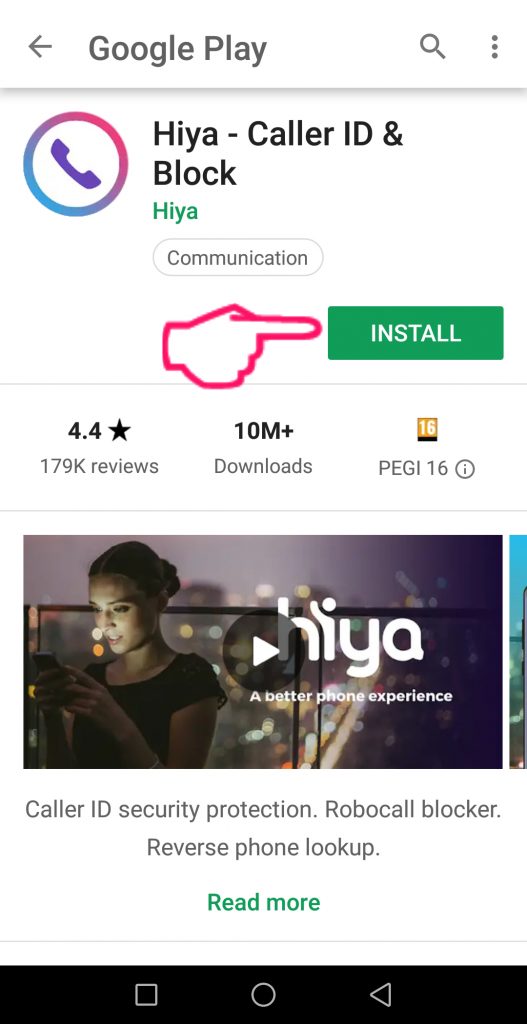
Step 3: Accept the terms and tap on “GET STARTED”.
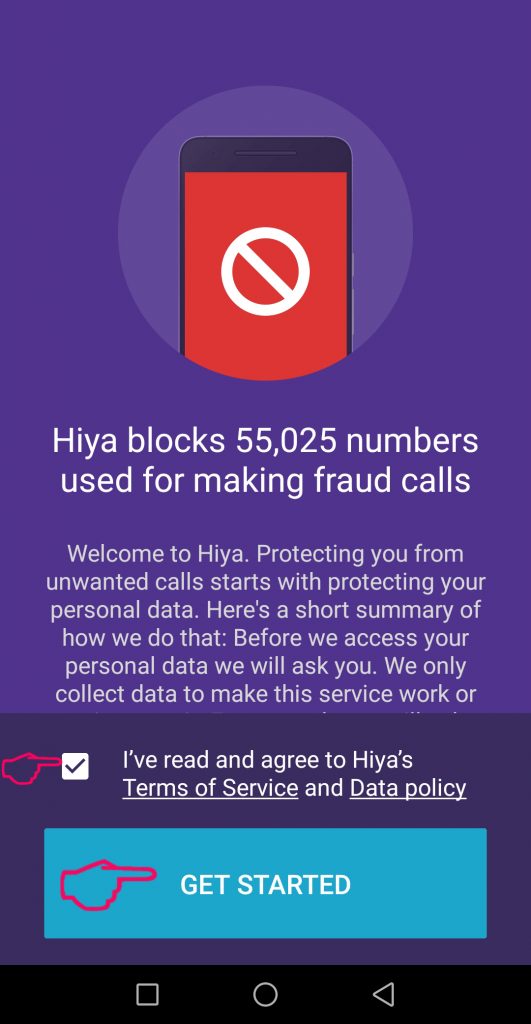
Step 4: Enter your phone number and tap on Next:

Step 5: You will receive a code. Enter it and tap to continue:
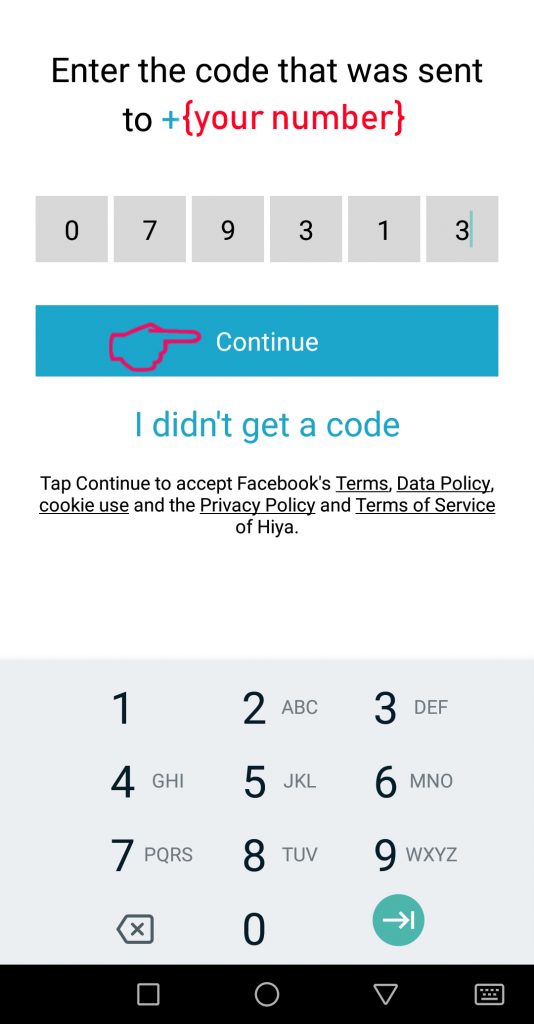
Step 6: Login with your Facebook or Google account to begin:
Step 7: The app is now set up and you can now use it to call numbers via It. It will automatically remain active and hidden in the background so that once you receive a call, it will block it. The app also has settings to block private numbers as well:
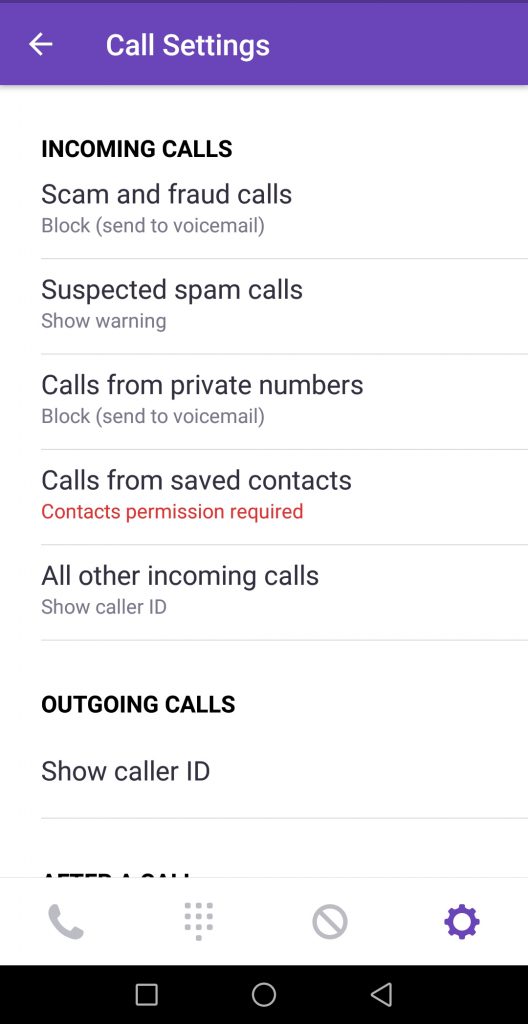
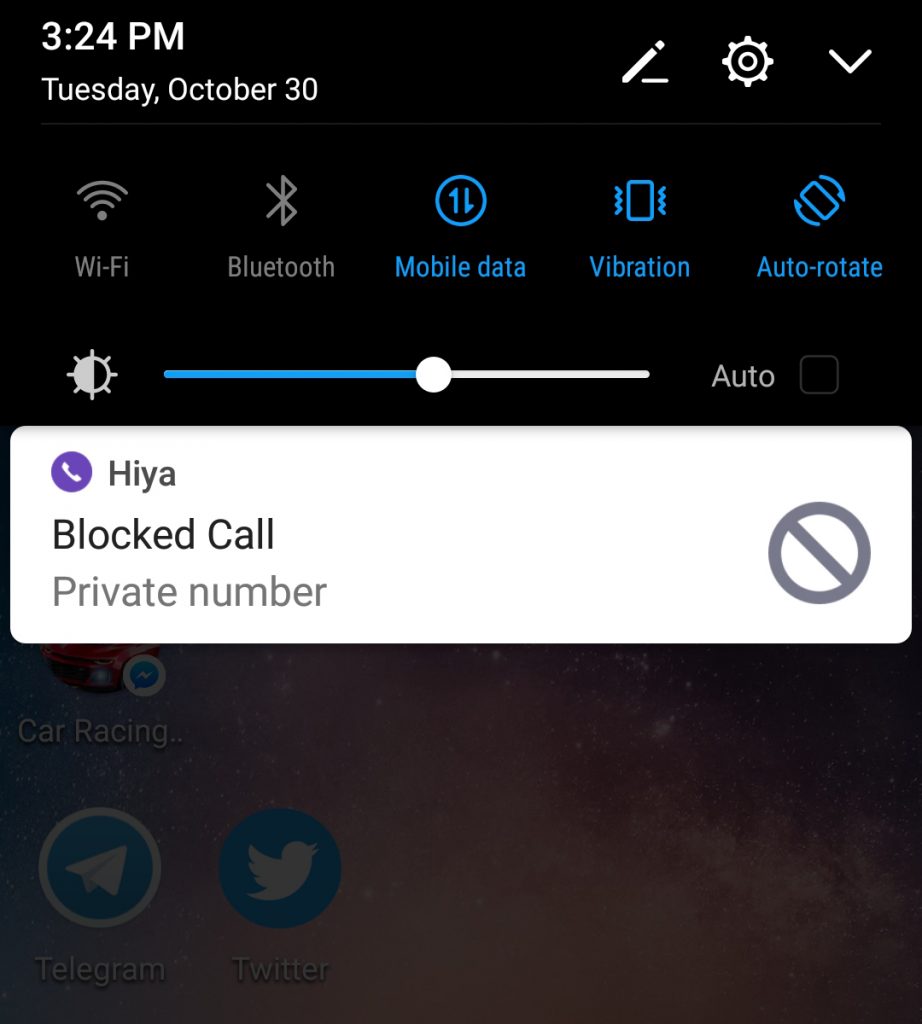
- Windows
- Mac OS X
- Google Chrome
- Mozilla Firefox
- Microsoft Edge
- Safari
- Internet Explorer
- Stop Push Pop-ups
How to Remove from Windows.
Step 1: Scan for with SpyHunter Anti-Malware Tool



Step 2: Boot Your PC In Safe Mode





Step 3: Uninstall and related software from Windows
Uninstall Steps for Windows 11



Uninstall Steps for Windows 10 and Older Versions
Here is a method in few easy steps that should be able to uninstall most programs. No matter if you are using Windows 10, 8, 7, Vista or XP, those steps will get the job done. Dragging the program or its folder to the recycle bin can be a very bad decision. If you do that, bits and pieces of the program are left behind, and that can lead to unstable work of your PC, errors with the file type associations and other unpleasant activities. The proper way to get a program off your computer is to Uninstall it. To do that:


 Follow the instructions above and you will successfully uninstall most programs.
Follow the instructions above and you will successfully uninstall most programs.
Step 4: Clean Any registries, Created by on Your PC.
The usually targeted registries of Windows machines are the following:
- HKEY_LOCAL_MACHINE\Software\Microsoft\Windows\CurrentVersion\Run
- HKEY_CURRENT_USER\Software\Microsoft\Windows\CurrentVersion\Run
- HKEY_LOCAL_MACHINE\Software\Microsoft\Windows\CurrentVersion\RunOnce
- HKEY_CURRENT_USER\Software\Microsoft\Windows\CurrentVersion\RunOnce
You can access them by opening the Windows registry editor and deleting any values, created by there. This can happen by following the steps underneath:


 Tip: To find a virus-created value, you can right-click on it and click "Modify" to see which file it is set to run. If this is the virus file location, remove the value.
Tip: To find a virus-created value, you can right-click on it and click "Modify" to see which file it is set to run. If this is the virus file location, remove the value.
Video Removal Guide for (Windows).
Get rid of from Mac OS X.
Step 1: Uninstall and remove related files and objects





Your Mac will then show you a list of items that start automatically when you log in. Look for any suspicious apps identical or similar to . Check the app you want to stop from running automatically and then select on the Minus (“-“) icon to hide it.
- Go to Finder.
- In the search bar type the name of the app that you want to remove.
- Above the search bar change the two drop down menus to “System Files” and “Are Included” so that you can see all of the files associated with the application you want to remove. Bear in mind that some of the files may not be related to the app so be very careful which files you delete.
- If all of the files are related, hold the ⌘+A buttons to select them and then drive them to “Trash”.
In case you cannot remove via Step 1 above:
In case you cannot find the virus files and objects in your Applications or other places we have shown above, you can manually look for them in the Libraries of your Mac. But before doing this, please read the disclaimer below:



You can repeat the same procedure with the following other Library directories:
→ ~/Library/LaunchAgents
/Library/LaunchDaemons
Tip: ~ is there on purpose, because it leads to more LaunchAgents.
Step 2: Scan for and remove files from your Mac
When you are facing problems on your Mac as a result of unwanted scripts and programs such as , the recommended way of eliminating the threat is by using an anti-malware program. SpyHunter for Mac offers advanced security features along with other modules that will improve your Mac’s security and protect it in the future.
Video Removal Guide for (Mac)
Remove from Google Chrome.
Step 1: Start Google Chrome and open the drop menu

Step 2: Move the cursor over "Tools" and then from the extended menu choose "Extensions"

Step 3: From the opened "Extensions" menu locate the unwanted extension and click on its "Remove" button.

Step 4: After the extension is removed, restart Google Chrome by closing it from the red "X" button at the top right corner and start it again.
Erase from Mozilla Firefox.
Step 1: Start Mozilla Firefox. Open the menu window:

Step 2: Select the "Add-ons" icon from the menu.

Step 3: Select the unwanted extension and click "Remove"

Step 4: After the extension is removed, restart Mozilla Firefox by closing it from the red "X" button at the top right corner and start it again.
Uninstall from Microsoft Edge.
Step 1: Start Edge browser.
Step 2: Open the drop menu by clicking on the icon at the top right corner.

Step 3: From the drop menu select "Extensions".

Step 4: Choose the suspected malicious extension you want to remove and then click on the gear icon.

Step 5: Remove the malicious extension by scrolling down and then clicking on Uninstall.

Remove from Safari
Step 1: Start the Safari app.
Step 2: After hovering your mouse cursor to the top of the screen, click on the Safari text to open its drop down menu.
Step 3: From the menu, click on "Preferences".

Step 4: After that, select the 'Extensions' Tab.

Step 5: Click once on the extension you want to remove.
Step 6: Click 'Uninstall'.

A pop-up window will appear asking for confirmation to uninstall the extension. Select 'Uninstall' again, and the will be removed.
Eliminate from Internet Explorer.
Step 1: Start Internet Explorer.
Step 2: Click on the gear icon labeled 'Tools' to open the drop menu and select 'Manage Add-ons'

Step 3: In the 'Manage Add-ons' window.

Step 4: Select the extension you want to remove and then click 'Disable'. A pop-up window will appear to inform you that you are about to disable the selected extension, and some more add-ons might be disabled as well. Leave all the boxes checked, and click 'Disable'.

Step 5: After the unwanted extension has been removed, restart Internet Explorer by closing it from the red 'X' button located at the top right corner and start it again.
Remove Push Notifications from Your Browsers
Turn Off Push Notifications from Google Chrome
To disable any Push Notices from Google Chrome browser, please follow the steps below:
Step 1: Go to Settings in Chrome.

Step 2: In Settings, select “Advanced Settings”:

Step 3: Click “Content Settings”:

Step 4: Open “Notifications”:

Step 5: Click the three dots and choose Block, Edit or Remove options:

Remove Push Notifications on Firefox
Step 1: Go to Firefox Options.

Step 2: Go to “Settings”, type “notifications” in the search bar and click "Settings":

Step 3: Click “Remove” on any site you wish notifications gone and click “Save Changes”

Stop Push Notifications on Opera
Step 1: In Opera, press ALT+P to go to Settings.

Step 2: In Setting search, type “Content” to go to Content Settings.

Step 3: Open Notifications:

Step 4: Do the same as you did with Google Chrome (explained below):

Eliminate Push Notifications on Safari
Step 1: Open Safari Preferences.

Step 2: Choose the domain from where you like push pop-ups gone and change to "Deny" from "Allow".
-FAQ
What Is ?
The threat is adware or browser redirect virus.
It may slow your computer down significantly and display advertisements. The main idea is for your information to likely get stolen or more ads to appear on your device.
The creators of such unwanted apps work with pay-per-click schemes to get your computer to visit risky or different types of websites that may generate them funds. This is why they do not even care what types of websites show up on the ads. This makes their unwanted software indirectly risky for your OS.
What Are the Symptoms of ?
There are several symptoms to look for when this particular threat and also unwanted apps in general are active:
Symptom #1: Your computer may become slow and have poor performance in general.
Symptom #2: You have toolbars, add-ons or extensions on your web browsers that you don't remember adding.
Symptom #3: You see all types of ads, like ad-supported search results, pop-ups and redirects to randomly appear.
Symptom #4: You see installed apps on your Mac running automatically and you do not remember installing them.
Symptom #5: You see suspicious processes running in your Task Manager.
If you see one or more of those symptoms, then security experts recommend that you check your computer for viruses.
What Types of Unwanted Programs Are There?
According to most malware researchers and cyber-security experts, the threats that can currently affect your device can be rogue antivirus software, adware, browser hijackers, clickers, fake optimizers and any forms of PUPs.
What to Do If I Have a "virus" like ?
With few simple actions. First and foremost, it is imperative that you follow these steps:
Step 1: Find a safe computer and connect it to another network, not the one that your Mac was infected in.
Step 2: Change all of your passwords, starting from your email passwords.
Step 3: Enable two-factor authentication for protection of your important accounts.
Step 4: Call your bank to change your credit card details (secret code, etc.) if you have saved your credit card for online shopping or have done online activities with your card.
Step 5: Make sure to call your ISP (Internet provider or carrier) and ask them to change your IP address.
Step 6: Change your Wi-Fi password.
Step 7: (Optional): Make sure to scan all of the devices connected to your network for viruses and repeat these steps for them if they are affected.
Step 8: Install anti-malware software with real-time protection on every device you have.
Step 9: Try not to download software from sites you know nothing about and stay away from low-reputation websites in general.
If you follow these recommendations, your network and all devices will become significantly more secure against any threats or information invasive software and be virus free and protected in the future too.
How Does Work?
Once installed, can collect data using trackers. This data is about your web browsing habits, such as the websites you visit and the search terms you use. It is then used to target you with ads or to sell your information to third parties.
can also download other malicious software onto your computer, such as viruses and spyware, which can be used to steal your personal information and show risky ads, that may redirect to virus sites or scams.
Is Malware?
The truth is that PUPs (adware, browser hijackers) are not viruses, but may be just as dangerous since they may show you and redirect you to malware websites and scam pages.
Many security experts classify potentially unwanted programs as malware. This is because of the unwanted effects that PUPs can cause, such as displaying intrusive ads and collecting user data without the user’s knowledge or consent.
About the Research
The content we publish on SensorsTechForum.com, this how-to removal guide included, is the outcome of extensive research, hard work and our team’s devotion to help you remove the specific, adware-related problem, and restore your browser and computer system.
How did we conduct the research on ?
Please note that our research is based on independent investigation. We are in contact with independent security researchers, thanks to which we receive daily updates on the latest malware, adware, and browser hijacker definitions.
Furthermore, the research behind the threat is backed with VirusTotal.
To better understand this online threat, please refer to the following articles which provide knowledgeable details.




I continually get these calls. I do not have the ability to block these calls or set up an app to block them as I have an old style flip phone that does not have internet access. I have reported them to the FTC, but they continue to call. What can I do???? I know that they are scams!!!
this isnt factual and youre spreading false information. medicare representatives most certainly will call and they do need your medicare number to browse plans
Hi there, unfortunately, Medicare scams exist in the wild, and people should be vigilant.